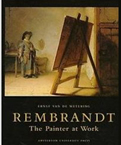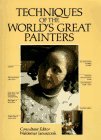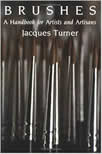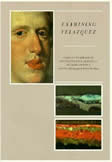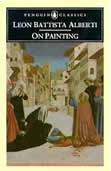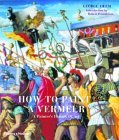By purchasing books via any of the Amazon.com or Amazon.uk links below, you will be contributing to the growth and maintenance of Essential Vermeer website, obviously, at no additional cost to your purchase.
Lookung Over Vermeer's Shoulder
by Jonathan Janson2020
3 Volumes: PDF
$30.00
200-plus illustrations and diagrams

Looking Over Vermeer's Shoulder is a comprehensive investigation into the principals, materials and techniques that made Vermeer one of the great masters of European easel painting. Although we do not know where or with whom Vermeer learned his craft, there now exists an wealth of scientific, art historical and visual evidence that demonstrates he possessed one of the most sophisticated 17th-century painting techniques. But to understand the intricacies of his methods and the true breadth of his art, it is necessary not only to know what went on inside Vermeer's studio, but outside as well.
Looking Over Vermeer's Shoulder explains in clear and comprehensible language every facet of Vermeer's and historic 17th-century painting practices in general, including such topics as underpainting, glazing, the use of the camera obscura, linear perspective, the colors of his palette and composition. A number of hitherto neglected topics such as studio organization, brushes and brushwork, and drapery and flesh painting are also addressed in full for the first time.
Bolstered by his qualifications as a Vermeer connoisseur and practicing painter, the three-volume PDF format—enriched by hundreds of color illustrations and original diagrams—permits the author to examine each of the 24 topics with requisite attention. The attentive reader will discover that by observing at close quarters the studio practices of Vermeer and his prominent Dutch and European contemporaries he will attain a fresh view of 17th-century easel painting, and he will be better equipped to delve into the mysteries of Vermeer's 35 sublime compositions, which reveal a seamless unity of craft and poetry.
To purchase all three volumes, please contact the author, Jonathan Janson (author and director of EssentialVermeer.com
VOL I
1 / Vermeer's Training, Technical Background and Ambitions
2 / An Overview of Vermeer’s Technical & Stylistic Evolution
3 / Fame, Originality & Subject Matter
4 / Reality or Illusion: Did Vermeer’s Interiors ever Exist?
5 / Color
6 / Composition
7 / Mimesi & Illusionism
VOL II
8 / Perspective
9 / Camera Obscura Vision
10 / Light & Modeling
11 / Studio
12 / Four Essential Motifs in Vermeer’s Oeuvre
13 / Drapery
14 / Painting Flesh
VOL III
15 / Canvas
16 / Grounding
17 / "Inventing," or Underdrawing
18 / "Dead-Coloring," or Underpainting
19 / "Working-up," or Finishing
20 / Glazing
21 / Mediums, Binders & Varnishes
22 / Paint Application & Consistency
23 / Pigments, Paints & Palettes
24 / Brushes & Brushwork
please note:
Looking Over Vermeer's Shoulder has not undergone a final copy edit, so minor errors in grammar, footnotation and image captions may be occasionally encountered. As soon as the final copy edit becomes available the purchaser will be notified and, on request, receive it without delay or charge.
:
Jane Jelley has taken a new path in this detective story. A painter herself, she has worked with the materials of his time: the cochineal insect and lapis lazuli; the sheep bones, soot, earth and rust. She shows us how painters made their pictures layer by layer; she investigates old secrets; and hears travelers'tales. She explores how Vermeer could have used a lens in the creation of his masterpieces, and made some experiments in her own studio to transfer images from projections directly to a canvas. She has found a reliable solution that corresponds to the scientific examination of Vermeer's work, which provides answers to some of the puzzles he left behind.
The clues were there all along. After all this time, now we can unlock the studio door, and catch a glimpse of Vermeer inside, painting light.
Jane Jelley is a painter of still life and landscape who became interested in the unusual technical qualities of Vermeer's painting, and in the arguments about whether or not he might have used a camera obscura in his work. Jane lives and works in Oxford.
Lessons in Classical Painting: Essential Techniques from Inside the Atelier
by Juliette Aristides2016

With the same direct, easy-to-follow approach of Juliette Aristides's previous books, Lessons in Classical Painting presents aspiring artists with the fundamental skills and tools needed to master painting in the atelier style. With more than 25 years of experience in ateliers and as an art instructor, Aristides pairs personal examples and insights with theory, assignments and demonstrations for readers, discussions of technical issues, and inspirational quotes. After taking a bird's eye look at painting as a whole, Aristides breaks down painting into big picture topics like grisaille, temperature and color, demonstrating how these key subjects can be applied by all painters.
Preserving our Heritage: Conservation, Restoration and Technical Research in the Mauritshuis
by Petria Noble, Sabrina Meloni, Carol Pottasch, Peter van der Ploeg. Epco Runia2009

The Mauritshuis in The Hague is one of the few Dutch museums to have its own restoration workshop. Here in recent years a team of experts have restored top works by Rembrandt, Johannes Vermeer, Carel Fabritius, Frans Hals, Hans Holbein, Jan Brueghel de Oude, Peter Paul Rubens, Anthonie van Dyck and others.
This book, with an introductory chapter, describes how a painting is made and the types of technical research that can be used. The concise texts and abundant visual material make the book accessible for a wide public.
A History of Chiaroscuro in Art Theory and Artistic Practice in the Netherlands of the Seventeenth and Eighteenth Centuries
by Ulrike Kern2013
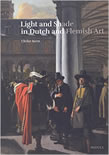
This book presents the first systematic analysis of artistic techniques and terminology related to the rendering of light and shade in Dutch and Flemish art from the early-seventeenth to the mid-eighteenth century. It traces a shift in aesthetic perception, which is visible in the handling of chiaroscuro in Dutch and Flemish art in the course of 150 years, and challenges the view, widespread since Julius von Schlosser's influential survey of European art and literarure, that Netherlandish art was mainly uninventive. In their discussions Netherlandish writers of art theory drew on a) earlier and foreign art literature, b) their insights, mainly as painters, into workshop practice, c) observation of nature (including natural sciences) and d) aesthetic judgement. This volume investigates the different extents to which Netherlandisch writers on art depended on these four aspects as they devised their concepts of chiaroscuro and how this relates to contemporary pictorial practice. Statements on chiaroscuro in the writings of Karel van Mander, Philips Angel, Willem Goeree, Samuel van Hoogstraten, Gerard de Lairesse, Arnold Houbraken and Jacob Campo Weyerman have been compared with paintings of the period to test the wri'statements against the artists'methods. The comparison shows that writers of art theory described partly the same or similar methods to achieve effects of chiaroscuro that artists used in their works, which is understandable, given that most of them were active as artists themselves. Yet there are also divergences, especially when it comes to the question whether artists should value rendering natural effects over pictorial coherence. Dutch writers of art regarded natural impression as a crucial aim of art, but they often struggled with reconciling nature and aesthetic requirements in their arguments. In the art of the Netherlands, however, we can observe frequently that aesthetic and pictorial composition came before nature.
Spike Bucklow sets out to unravel the myths behind pigments like dragonsblood said to be a mixture of elephants and dragons blood. Examining both the medieval palette and the often cloak-and-dagger science that created it, he uncovers the secret recipes behind the luxurious colours we are familiar with today. Driven by an overriding passion for art his aim is to restore value to colour and sever the links forged between corporations and the colours they have hijacked.
Classical Painting Atelier: A Contemporary Guide to Traditional Studio Practice
by Juliette Aristides2008
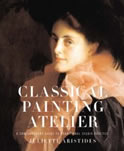
Students of art hailed Classical Drawing Atelier, Juliette Aristides's first book, as a dynamic return to the atelier educational model. Ateliers, popular in the nineteenth century, teach emerging artists by pairing them with a master artist over a period of years. The educational process begins as students copy masterworks, then gradually progress to painting as their skills develop. The many artists at every level who learned from Classical Drawing Atelier have been clamoring for more of this sophisticated approach to teaching and learning. In Classical Painting Atelier, Aristides, a leader in the atelier movement, takes students step-by-step through the finest works of Old Masters and today's most respected realist artists to reveal the principles of creating full-color realist still lifes, portraits and figure paintings. Rich in tradition, yet practical for today's artists, Classical Painting Atelier is ideal for serious art students seeking a timeless visual education.
About the Author:
Juliette Aristides, whose beautiful art is featured throughout this book, is the instructor of the Aristides Classical Atelier at the Gage Academy of Art in Seattle, Washington, where she lives. Her work is exhibited at the John Pence Gallery in San Francisco.
Classical Drawing Atelier: A Contemporary Guide to Traditional Studio Practice
(Hardcover)by Juliette Aristides
2006
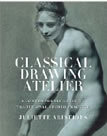
Ateliers have produced the greatest artists of all time—and now that educational model is experiencing a Renaissance. These studios, a return to classical art training, are based on the nineteenth-century model of teaching artists by pairing them with a master artist over a period of years. Students begin by copying masterworks, then gradually progress to painting as their skills develop. Classical Drawing Atelier is an atelier in a book—and the master is Juliette Aristides, a classically trained artist. On every page, Aristides uses the works of works of Old Masters and today's most respected realist artists to demonstrate and teach the principles of realist drawing and painting, taking students step by step through the learning curve yet allowing them to work at their own pace. Unique and inspiring, Classical Drawing Atelier is a serious art course for serious art students.
About the Author:
Juliette Aristides, whose beautiful art is featured throughout this book, is the instructor of the Aristides Classical Atelier at the Gage Academy of Art in Seattle, Washington, where she lives. Her work is exhibited at the John Pence Gallery in San Francisco.
Greek and Roman art methods, medieval techniques, tempera painting, van Eyck's revolutionary use of oil paints, Flemish methods of preparing colors, methods of eighteenth-century British artists, technical secrets of Italian schools, including such masters as Leonardo, Raphael, Correggio, Andrea del Sarto and more.
Lost secrets of Flemish painting: Including the first complete English translation of the De Mayerne Manuscript, B.M. Sloane
by Donald Fels Jr.2001

The great masters painted with great speed and used "illusions" that were made possible through the use of various mediums and varnishes that they developed and often kept secret. These very same mediums and varnishes and their methods of manufacture are described in detail in "recipe" format by Mr Fels. This compilation of lost studio practices and mediums used by Renaissance and Baroque craftsmen and painters is the result of Mr. Fels'10 years of research as master musical instrument maker, artist and maker of historical paint mediums. Conceived from an artist and craftsman's point of view, this work is a must read for those interested in methods and materials prior to 1700.
Rembrandt's intriguing painting technique has stirred the imagination of art lovers during his lifetime and ever since. In this book, Rembrandt's pictorial intentions and the variety of materials and techniques he applied to create his fascinating effects are unraveled in depth. At the same time, this "archaeology"of Rembrandt's paintings yields information on many other levels.
In art-historical research, the work of art as a material object is used increasingly as an important source of information about the painting itself, as well as about historic studio practice in general. The range from practical workshop devices to aesthetic and art-theoretical matters combined in this book offers a view of Rembrandt's daily practice and artistic considerations, while simultaneously providing a more three-dimensional image of the historical artist.
Still Lifes: Techniques and Style: An Examination of Paintings from the Rijksmuseum
edited by Arie Wallert2000
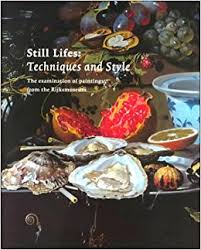
This beautiful book is an intensive and visually enchanting examination of nineteen flower and still life masterpieces from museums around the world. This book was written in conjunction with the show presented at the Rijksmuseum, June through September of l999. Art lovers, artists, scholars, conservators and laymen will enjoy this journey back to the seventeenth- and eighteen-century workshops of such artistic giants as Jan Brueghel, Jan Davidsz de Heem, Rachel Ruysch, Jan Van Huysum and more. Historical backgrounds of fifteen painters are featured along with technical information on supports (canvas, wood or copper), imprimaturas, under drawings, mediums and paints. Beautiful color plates, artistic techniques, and scientific knowledge are share.
The Oil Painting Book: Materials and Techniques for Today's Artist (Watson-Guptill Materials and Techniques)
by Bill Creevy1999

A survey of all the oil painting materials that currently exist, beginning with the leading professional paints and lesser known brands, and including such recent innovations as oil sticks, alkyds and water-miscible oils. Also includes solvents, mediums, varnishes and supports followed by step-by-step demonstrations of painting techniques and beautiful finished works.
Medieval and Renaissance Treatises on the Arts of Painting: Original Texts With English Translations
by Mary P. Merrifield1999
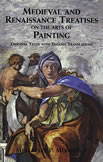
Preeminent among rare reference books, this 1849 work reprints (with the original-language version and its English translation on facing pages) manuscript collections on painting and related arts from the twelfth through seventeenth centuries. The treatises describe European oil painting practices, methods of mixing pigments, much more. Preliminary commentary on each treatise, plus excellent introduction discussing social history, artistic practices.
Scholars, conservators and scientists investigate various aspects of Vermeer's work. Iconography, technique and artistic interpretation are all addressed in depth, many recent findings are included. While this volume does not address exclusively the painting technique of Johannes Vermeer, there are nonetheless various essays which contain extremely valuable information for understanding the Delft master's methods and materials including:
"Where Did Vermeer Buy His Painting Materials? Theory and Practice"
by Koos Levy-van Halm
"A Study of the Materials and Techniques of Johannes Vermeer"
by Nicolas Costara
Scientific Examination of Vermeer's 'Girl with a Pearl Earring' by Karin M. Goen, Inez D. Van der Werf, Klaas Jan van den Berg, and Jaap J. Boon
"Painting Light: Recent Observations on Vermeer's Technique"
by E. Melanie Gifford
"Contours in Vermeer's Paintings"
by Jørgen Wadum
In this beautiful and engaging book, an art historian and a conservation scientist discuss the techniques Velazquez created in order to realize his artistic vision. Examining thirty works by Velazquez that span his entire career, the authors show how his technical achievement developed over time.
"Velazquez: The Technique of Genius is an illuminating introduction to what can be learnt from the surface of the pictures. . . . It is built round illustrations of details, nearly all from paintings in the Prado."
—Peter Campbell, London Review of Books
"A ravishingly beautiful, highly informative book. Brown and Garrido work well together, interweaving the artistic/historical background with the messy forensic facts effortlessly; the detail is stunning."
—George Crisp, Art Review
Artists'Pigments: A Handbook of Their History and Characteristics
edited by Robert L. Feller(National Gallery of Art, Washington)
1997

For the practicing artist to learn a pigment's color, hiding power, lightfastness, toxicity, compatibility.
For the art historian to know how an artist worked, what pigments were used, whether they were pure or mixed, opaque of transparent, layered or not. For the conservator to devise techniques necessary for care and conservation of works of art; to determine what is original, to repair damages, to compensate for missing portions of a painted surface.
For the curator/connoisseur to know the history of the manufacture, use and availability of pigments in order to authenticate and assign probable dates to works of art.
For the conversation scientist to learn identification methods used, including optical microscopy, microchemical tests, x-ray diffraction, infrared and reflectance spectrohotometry, and electron microscopy.
The third volume is this magisterial series contains articles on Egyptian Blue, Orpiment and Realgar, Indigo and Woad, Madder and Alizarin, Gamboge, Vandyke Brown, Prussian Blue, Emerald Green and Scheele's Green, Chromium Oxide Greens, and Titanium Dioxide Whites.
Richly illustrated and covering a wide range of artists, this book does not merely give a biography of the artist and an example of his works. Its attraction lies in the fact that one painting of each artist is analyzed in detail including sequence of painting, materials and techniques used from the start to finish with some good close-ups and analysis.
Samuel van Hoogstraten is familiar to scholars of Dutch art as a talented pupil and early critic of Rembrandt, and as the author of a major Dutch painting treatise. In this book, Celeste Brusati looks at the art, writing and career of this multi-faceted artist.
Analyzing van Hoogstraten's painting treatise, illusionistic pictures, ingenious perspective boxes, and witty trompe-l'œil images, Brusati reveals the crucial role these endeavors played in the forging of van Hoogstraten's professional and social identity. Brusati looks at the historical circumstances of van Hoogstraten's career, which he fashioned from a convergence of Dutch cultural practices, family genealogy, and his considerable entrepreneurial acumen. She shows how Van Hoogstraten exploited the court patronage system to secure the worth of his work in the newer market culture of the Dutch Republic.
Brusati explores Van Hoogstraten's use of illusionistic artifice in his art and writing to shed new light on the much-disputed nature of Dutch "realism," and she discusses how a notion of "experimental artistry," which linked representational craft to the production of knowledge, informed Van Hoogstraten's many projects and framed the terms within which he and his colleagues understood artistic achievement during this period.
Edward Snow's A Study of Vermeer, first published in 1979 and here presented in an expanded and elaborately revised version, starts from a single premise: that we respond so intensely to Vermeer because his paintings reach so deeply into our lives. Our desire for images, the distances that separate us, the validations we seek from the still world, the traces of ghostliness in our own human presence these, the book proposes, are Vermeer's themes, which he pursues with a realism always in touch with the uncanny. As Snow traces the many counterpoised sensations that make up Vermeer's equanimity, he leads us into a world of nuances and surprise. A Study of Vermeer is passionate and visual in its commitments. Snow works from the conviction that viewing pictures is a reciprocal act symbiotic, consequential, real. His discussions of Vermeer's paintings are conducted in a language of patient observation, and they involve the reader in an experience of deepening relation and ongoing visual discovery.
What is tempera? What is fresco? What is foreshortening? What is a tondo? This book offers definitions of these and other techniques, processes and materials used by painters for centuries. Numerous illustrations provide a rich and informative history of the medium. Looking At Paintings presents concise and readable information arranged in alphabetical order.
The most important tool for the artist is the brush. Yet despite of the importance and the often staggering prices, most artists know little or nothing about making, handling and care of brushes. This book will tell you: Why the origin of the hairs or bristles is so important; why some brushes ere so expensive; how to choose the right shape or size; how to keep your brush in shape for years; and how to compare the length out, point, belly, ferrule, crimping and handles of brushes.
Since 1940, when it was originally published, The Artist's Handbook has become indispensable for thousands of practicing artists and art students. The book has remained continually in print through many editions and has sold more than a quarter of a million copies. A detailed index makes a wealth of information readily available. Charts and line drawings throughout.
In this innovative book, an art historian, a conservator, a conservation scientist, and an instrumental photographer join together to analyze scientifically seven of the most important paintings of Diego Velazquez. Using traditional techniques as well as x radiography and infrared photography, they are able to reassess the significance of Velazquez's paintings and painting techniques within the context of seventeenth-century European art.
"Examining Velazquez breaks new ground, not in the application of technical investigation to art historical problems, but rather in the equal status given the authors of the publication: a scholar, a conservator, and a conservation scientist. The authors bring their own individual perspectives to focus on the issues. They have wisely chosen to use a capable technical photographer in the book. . . . The book comes into its own in the section on Velazquez's materials and technique. This passage is rich in comparative information on his supports, pigments and grounds—all prime information for future comparative studies, as is the identification of published occurrences of Velazquez's pigments. . . . An extensive bibliography . . . is included as a teaching aid. This is a book that hits a very broad audience with something for everyone. . . . The book is enlightening and full of sound, factual information as well as wonderful speculation. . . . [The book] clearly shows the effort is worthwhile and is sure to encourage others to undertake the task of interdisciplinary study."
—Ross Merrill, Museum News
The Materials of the Artist and their Use in Painting: With Notes on the Techniques of the Old Masters, revised edition
by Max Doernerrevised 1984

While most curriculums today in art schools will have the words conception underlined, there is a desperate need for the craft of painting to be taught. If you do not want to wait until craftsmanship comes back in style and are a painter, than you must have this book. If you are learning how to better understand the painters of yesterday; you must have this book. If you are curious as to how painters such as Vermeer etc could accomplish want they did, this book is for you. Though the language is sometimes formal the information is so fascinating and inclusive it makes for great and enjoyable reading; Painter or just admirer.
This is not a book for complete beginners, but definitely a must for anyone who considers himself serious as an artist. It provides a very detailed insight into the preparation of materials, the handling of paints and reveals numerous techniques, which were employed by the great masters (not only Renaissance and Baroque, but 18 and 19th century painters and some of the impressionists). There is a separate chapter dedicated entirely to the technique of the old masters.
Great craftsman and biographer's full, readable discussions of architecture—orders, pavements, planning and design, etc.; sculpture—modeling in wax and clay, tools and materials used in marble carving, reliefs, bronze figures, etc.; painting—foreshortening, coloring, fresco, tempera, gilding, stained glass windows, niello work, etc. Written in a very pleasant style. Introduction and notes by G. Baldwin Brown. 29 illustrations.
The Craftsman's Handbook: "Il Libro dell'Arte"
by Cennino d'Andrea Cennini (Daniel V. Thompson)1954

A hand book for the fine artist. Art, drawing, computers, images of the mind all come together when we understand the skills that go into making a creative work. Hear the voices of Fifteenth Century craftsmen. Try to understand their times and you will understand the how the skills of the Old Masters were acquired. If you are a serious artist, then take the opportunity to experience silverpoint drawing.
Leonardo on Painting: An Anthology of Writings by Leonardo da Vinci with a Selection of Documents Relating to his Career
edited by Martin Kamp2001

Leonardo da Vinci was a prolific writer, recording his thoughts and observations. This book collects all his writings on paintings into one comprehensive volume, grouped together under subjects: General Principles, The Science of Vision in Painting, The Human Body (proportions, anatomy, motion, posture, expression, draperies), The Depiction of Nature (light in the countryside, distances, water, horizons, mountains, trees), The Painter's Practice, and Leonardo's Artistic Career. The headings throughout the text make it easy to dip into, while the comprehensive index enables you to easily find Leonardo's writings a specific subject. It makes one of art's most creative minds accessible to every painter.
Alberti is one of the more readable of the 'cla'authors on Art, much less prone to gossip than Vasari and less convoluted than Cennini. That said, some of the text on geometry in book one can be a bit difficult to follow. Alberti also loves to name-drop, continually referring to antique painters, but this was expected at the time—the ancients lending authority and historical context. 'On Pain'gives the reader an insight into the tastes and philosophies that inform the arts.
Ranging over hundreds of years—and countless styles—with breathtaking virtuosity, George Deem has repainted the history of Western art. Deem's special gift is to paint, with witty sympathy, his own "revisions" of famous works, revisions that look like the originals but transform them in some way.
Now, in the most comprehensive collection of his work ever assembled, the amazing scope of Deem's devotion to his subject, art itself, can be seen. The greatest American and European artists are represented; their work, at first glance, seems uncannily perfect. Here is an exquisite Vermeer, looking so much like the original that it takes a moment to realize there is no woman holding a water pitcher in the corner of the room. And here is Cubist Cache, Deem's tour de force imagining of what Parisians do with their cubist art when they go away on vacation.
This is the perfect gift book for art lovers. On one level it offers a delightful excursion through the famous paintings that everyone loves. On another, we marvel at the virtuoso display of artistic technique, in which no style or era can resist Deem's fond embrace and witty act of quotation. And finally, here is a body of work that, in affirming the richness and variety of its subject, reaffirms the pleasure we take in painting.
Over 200 recipes for making sizes, grounds, mediums, glazes, varnishes, fixations and adhesives from raw materials. 42 recipes for paint alone, from encaustic to acrylic. Lists lime-proof pigments, drying characteristics, oil absorption, melting points, drying times of oils and resins.



